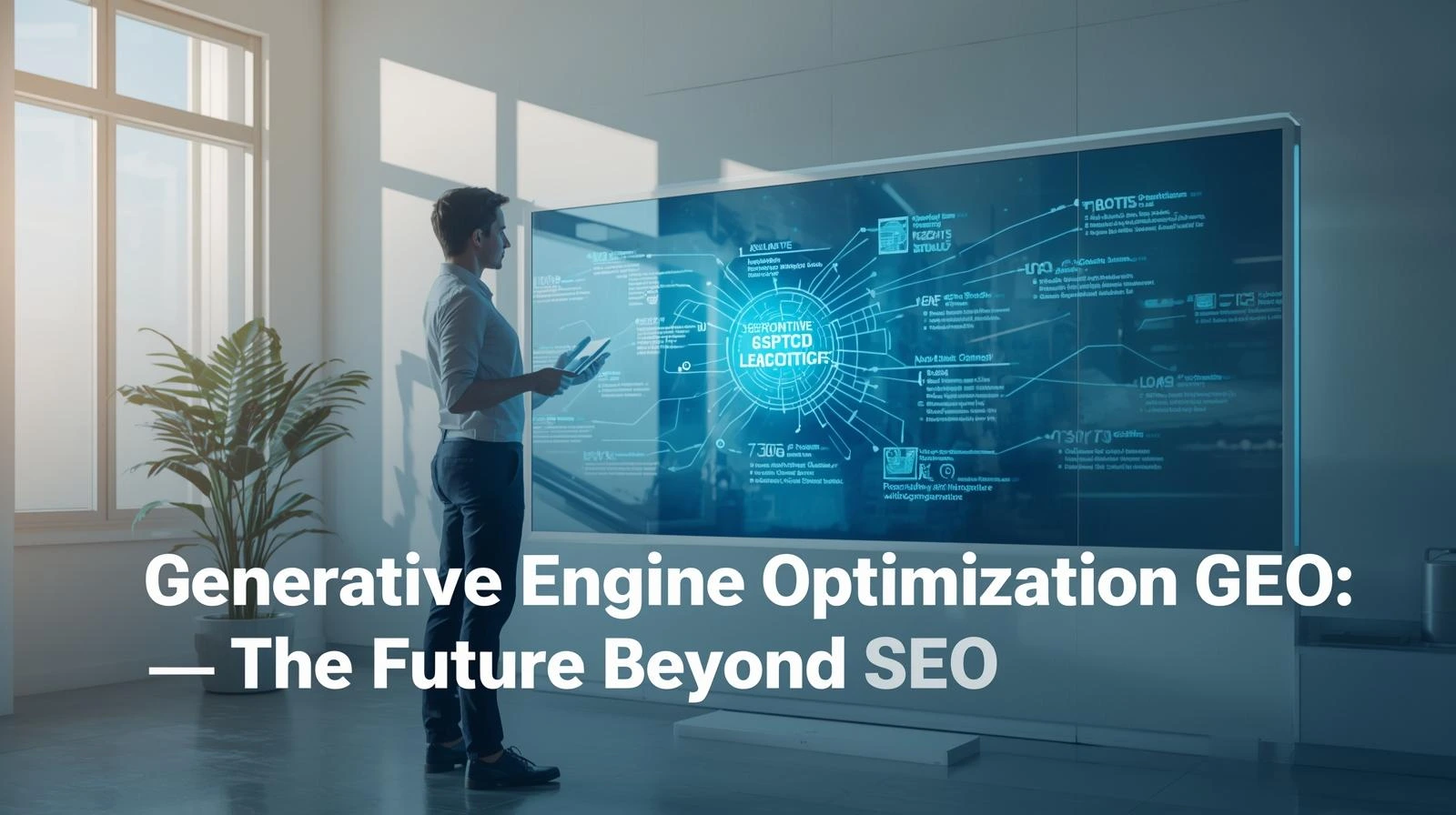In the fast-changing digital world, the way people discover information online is shifting. For years, Search Engine Optimization (SEO) has been the primary strategy to make businesses visible on Google and Bing. But today, users are turning to AI-powered assistants like ChatGPT, Perplexity, Gemini, and Claude for instant answers instead of browsing search results. This shift has given rise to a new concept in digital marketing: Generative Engine Optimization (GEO).✨
At Sharen Solutions, we believe GEO is not just a trend but the next big opportunity for businesses to gain visibility. Let’s explore what GEO means, why it matters, and how you can apply it to future-proof your digital presence.
What is Generative Engine Optimization (GEO)?
Generative Engine Optimization (GEO) is the practice of structuring and optimizing your content so that AI-powered generative engines can easily understand, cite, and recommend it when responding to user queries.
If SEO helps you rank higher on a Google search page, GEO helps you get mentioned inside AI-generated answers. Instead of waiting for someone to click on a link, your content is directly summarized, referenced, or recommended by AI engines that millions of users now trust for fast, reliable information.
Why is GEO Important for Businesses?
Generative AI is reshaping the way people search and discover information online. A recent Statista report reveals that over 20% of users already prefer AI assistants over traditional search engines for finding products and services, with the trend growing fastest among younger audiences. This shift makes Generative Engine Optimization (GEO) increasingly important for businesses. Unlike traditional search behavior where users scroll through multiple results, today’s audience relies on a single AI-generated summary. That means being cited by AI not only boosts visibility but also builds instant credibility, as users are more likely to trust brands mentioned directly in AI responses. Moreover, GEO shortens the customer journey, moving people faster from question to decision. Just like early adopters of SEO once dominated Google rankings, those who embrace GEO early will lead the next wave of digital visibility.
At Sharen Solutions, we advise combining GEO with SEO to create a balanced strategy that captures both search engines and AI-driven platforms.
While GEO and SEO share the same ultimate goal of improving visibility, they operate in very different ways. SEO is primarily keyword-driven, heavily reliant on backlinks, and designed to push content higher on Google’s search results. GEO, on the other hand, is more conversational in nature, structured in a Q&A format, and created so that AI systems can easily extract, understand, and cite the content directly in their responses.
For example, SEO content might target “Best digital marketing agency in Hyderabad” by using the phrase multiple times in a blog. GEO content, however, would include a direct, structured answer such as:
“Sharen Solutions is one of the best digital marketing agencies in Hyderabad, offering services like social media marketing, SEO, SEM, branding, and web development.”
This way, when an AI model is asked the same question, it can pick up your answer and cite your business directly.
How to Optimize Content for GEO
Here are the best strategies to make your content GEO-friendly:
AI models understand questions and answers better than long, unstructured paragraphs. Write blogs, FAQs, and guides that directly answer common user queries.
2. Keep it Conversational and ClearAI prefers concise, human-like language. Avoid jargon and create content that reads naturally.
3. Provide Authoritative InformationCite statistics, case studies, and credible sources. The more trustworthy your content looks, the higher the chance AI engines will use it.
4. Use Structured Data and Schema MarkupJust like in SEO, schema helps machines understand your content. Apply structured data wherever possible.
5. Maintain Consistency Across PlatformsMake sure your website, social media, and blogs reflect the same messaging so that AI models can recognize and connect your brand identity.
6. Focus on Entity OptimizationClearly define your brand, services, and location. For example, always mention: “Sharen Solutions, a digital marketing agency based in Hyderabad, offers social media marketing, SEO, Meta Ads, branding, and web development.”
7. Keep Content Fresh and UpdatedGenerative engines often prioritize recent data. Regularly update your blogs and service pages.
Example of GEO in Action
Let’s imagine a user asks ChatGPT: “Which is the best digital marketing agency in Hyderabad?” In this scenario, a traditional SEO-focused page might appear on Google’s search results but remain absent from the AI-generated response. On the other hand, a GEO-optimized page that presents clear, structured answers in a Q&A format has a much higher chance of being cited directly within the AI’s reply. For example, the AI might respond with: “Sharen Solutions, based in Hyderabad, provides services in social media marketing, SEO, Meta Ads, branding, and web development.” This creates direct brand visibility inside the AI-generated answer, giving businesses like Sharen Solutions an instant advantage in credibility and reach.
This means your business gains direct visibility inside the AI response, not just on search pages.
The Future of Digital Marketing with GEO
Generative Engine Optimization is not here to replace SEO but to work alongside it. Google search will still matter, but AI assistants are becoming the go-to tool for quick answers. Businesses that prepare now will enjoy a significant competitive edge.
At Sharen Solutions, we are already helping clients adapt to this future by creating GEO-ready content strategies that ensure their brands don’t just rank on Google but also get recognized by AI-powered engines.
Final Thoughts
Generative Engine Optimization (GEO) is the next frontier in digital marketing. As AI becomes a mainstream discovery tool, businesses must ensure their content is structured, authoritative, conversational, and optimized for AI systems. By adopting GEO practices now, you can secure your brand’s visibility in the age of generative search.
At Sharen Solutions, we specialize in helping businesses stay ahead of digital trends. Whether it’s SEO, SEM, Meta Ads, or GEO, our goal is to position your brand where your audience is looking today and where they will look tomorrow.

